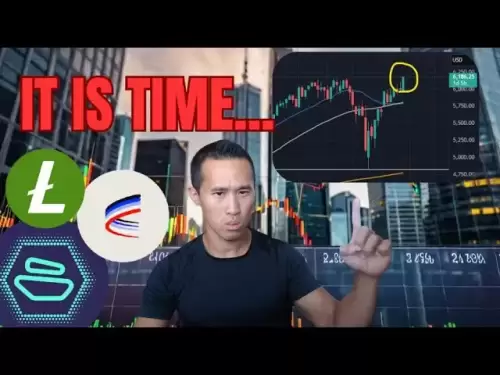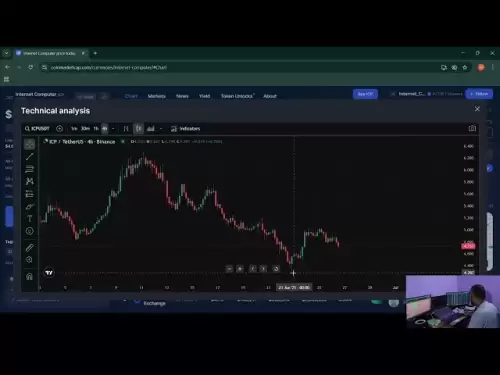-
 Bitcoin
Bitcoin $107,247.2038
-0.18% -
 Ethereum
Ethereum $2,424.7947
0.34% -
 Tether USDt
Tether USDt $1.0003
-0.02% -
 XRP
XRP $2.1171
-3.33% -
 BNB
BNB $645.6618
0.06% -
 Solana
Solana $141.5898
-1.32% -
 USDC
USDC $0.9998
0.00% -
 TRON
TRON $0.2710
-0.41% -
 Dogecoin
Dogecoin $0.1602
-2.99% -
 Cardano
Cardano $0.5553
-2.28% -
 Hyperliquid
Hyperliquid $36.3019
-2.42% -
 Bitcoin Cash
Bitcoin Cash $491.7212
2.04% -
 Chainlink
Chainlink $13.0810
-0.23% -
 Sui
Sui $2.6080
-5.06% -
 UNUS SED LEO
UNUS SED LEO $9.0040
-0.05% -
 Stellar
Stellar $0.2350
-3.06% -
 Avalanche
Avalanche $17.2294
-2.31% -
 Toncoin
Toncoin $2.8075
-1.05% -
 Shiba Inu
Shiba Inu $0.0...01121
-3.43% -
 Litecoin
Litecoin $84.2215
-0.32% -
 Hedera
Hedera $0.1429
-4.88% -
 Monero
Monero $312.2199
-0.90% -
 Dai
Dai $0.9997
-0.01% -
 Ethena USDe
Ethena USDe $0.9999
-0.02% -
 Polkadot
Polkadot $3.2973
-2.60% -
 Bitget Token
Bitget Token $4.4742
3.12% -
 Pi
Pi $0.5631
-10.10% -
 Uniswap
Uniswap $6.7817
-2.06% -
 Pepe
Pepe $0.0...09252
-3.74% -
 Aave
Aave $251.3830
-2.24%
Is Tether investment real?
The stability of Tether's (USDT) 1:1 peg to the US dollar hinges on the company's ability to hold sufficient reserves in stable assets, raising concerns due to the inclusion of commercial paper and other less liquid holdings.
Jan 11, 2025 at 07:08 am

Key Points:
- Understanding Tether's Stability and Risk Factors
- Assessing Tether's Reserves and Transparency
- Evaluating Tether's Regulatory Compliance
- Exploring Alternative Stablecoins for Diversification
- Mitigating Potential Risks Through Proper Investment Strategies
Is Tether Investment Real?
Tether (USDT) is a highly controversial stablecoin that has sparked concerns among investors due to its alleged lack of transparency and potential risks. Understanding the underlying mechanisms and associated uncertainties is crucial for informed decision-making regarding USDT investments.
1. Analyzing Tether's Stability and Risk Factors:
- Tether is designed to maintain a 1:1 peg to the US dollar, promising to redeem each USDT for $1 upon request. However, the stability of this peg relies heavily on the company's ability to hold sufficient reserves in stable assets.
- Concerns have been raised about the composition of Tether's reserves, which reportedly include a significant portion of commercial paper and other less liquid assets. This raises questions about the ability to redeem USDT promptly during periods of market volatility or increased demand for redemptions.
- Tether has faced scrutiny over its lending practices, with critics alleging that it has provided loans to affiliated entities, raising concerns about conflicts of interest and potential solvency issues.
2. Assessing Tether's Reserves and Transparency:
- Tether claims to maintain a fully backed reserve, with each USDT backed by an equivalent amount of redeemable assets. However, the company has been criticized for lack of transparency in disclosing its reserves.
- Tether has released limited attestations from third-party firms, but these provide only snapshots of its reserves at a specific point in time. Concerns remain about the accuracy and completeness of these attestations.
- The lack of regular independent audits and detailed disclosures about the composition and quality of Tether's reserves creates uncertainty among investors.
3. Evaluating Tether's Regulatory Compliance:
- Tether is not regulated by any major financial authority, such as the US Securities and Exchange Commission (SEC) or the Commodity Futures Trading Commission (CFTC). This lack of regulatory oversight raises concerns about its compliance with anti-money laundering and anti-terrorism financing laws.
- Tether has been the subject of multiple investigations by regulatory agencies, including the SEC and the New York Attorney General's Office. These investigations have focused on allegations of market manipulation and providing false or misleading information about its reserves.
- The regulatory uncertainty surrounding Tether adds another layer of risk to potential investors.
4. Exploring Alternative Stablecoins for Diversification:
- While USDT remains one of the most widely used stablecoins, investors should consider diversifying their stablecoin holdings to mitigate potential risks associated with a single issuer.
- Alternative stablecoins include Binance USD (BUSD), Pax Dollar (USDP), and Circle USD Coin (USDC). These stablecoins are backed by reputable companies and have provided relatively stable value pegs.
5. Mitigating Potential Risks Through Proper Investment Strategies:
- Investors considering USDT investments should carefully weigh the potential risks and rewards. It is essential to thoroughly understand the company's reserves, transparency practices, and regulatory compliance.
- Diversification across multiple stablecoins can help reduce the risks associated with any single issuer.
- Monitoring market conditions and the company's financial health is crucial for staying informed and making timely adjustments to investment strategies.
FAQs:
- What are the underlying assets backing Tether (USDT)?
Tether's reserves reportedly include a mix of cash, bank deposits, commercial paper, and other assets. The company has not provided detailed breakdowns of its reserve portfolio, raising concerns about its liquidity and stability. - Is Tether regulated by any financial authority?
No, Tether is not regulated by any major financial authority, such as the SEC or the CFTC. This lack of regulatory oversight raises concerns about its compliance with anti-money laundering and anti-terrorism financing laws. - What are the risks associated with investing in USDT?
Potential risks include the stability of USDT's peg to the US dollar, the composition and liquidity of its reserves, the lack of transparency in disclosing its reserves, and its regulatory uncertainty. - What are the alternative stablecoins that investors can consider?
Alternative stablecoins include Binance USD (BUSD), Pax Dollar (USDP), and Circle USD Coin (USDC). These stablecoins are backed by reputable companies and have provided relatively stable value pegs.
Disclaimer:info@kdj.com
The information provided is not trading advice. kdj.com does not assume any responsibility for any investments made based on the information provided in this article. Cryptocurrencies are highly volatile and it is highly recommended that you invest with caution after thorough research!
If you believe that the content used on this website infringes your copyright, please contact us immediately (info@kdj.com) and we will delete it promptly.
- Crypto Presales in 2025: MAGACOIN FINANCE and the Hunt for New Coins
- 2025-06-27 04:50:12
- Bitcoin's Next Leap: Will It Hit a New All-Time High with Michaël van de Poppe's Prediction?
- 2025-06-27 05:50:12
- Litecoin Mining in 2025: Rigs, Returns, and the Rise of Cloud Mining
- 2025-06-27 05:10:12
- LINK's Holder Count Soars as ATH Predictions Heat Up: What's Next?
- 2025-06-27 05:30:12
- Dogecoin, Meme Coins, and Price Predictions: What's the Hype?
- 2025-06-27 05:50:12
- Senate, Bitcoin, and the Reserve: What's the Deal?
- 2025-06-27 04:30:12
Related knowledge
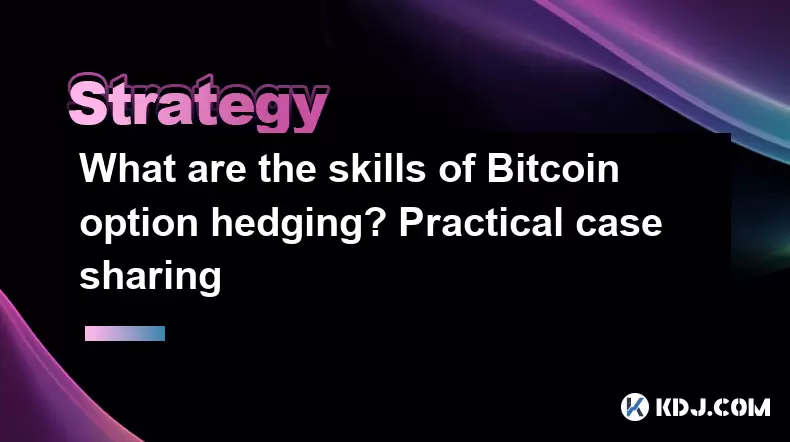
What are the skills of Bitcoin option hedging? Practical case sharing
Jun 24,2025 at 04:01pm
Understanding Bitcoin Option HedgingBitcoin option hedging is a risk management strategy used by traders and investors to protect their positions in the volatile cryptocurrency market. By using options, individuals can limit potential losses while retaining the opportunity for profit. In essence, it allows one to insulate against adverse price movements...
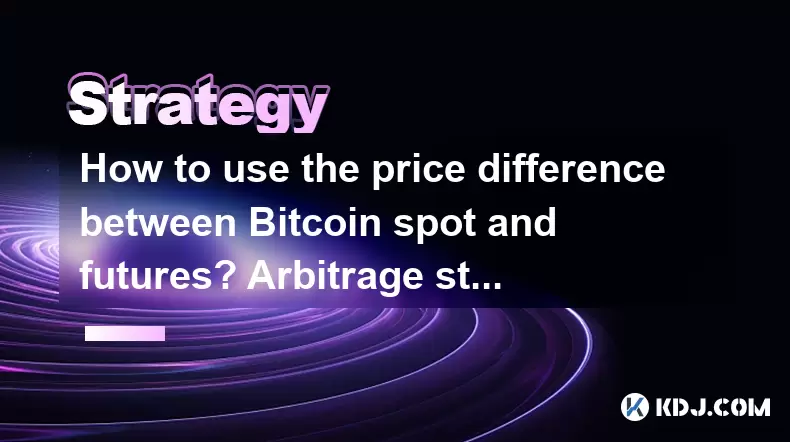
How to use the price difference between Bitcoin spot and futures? Arbitrage strategy
Jun 20,2025 at 02:56pm
Understanding Bitcoin Spot and Futures MarketsTo effectively leverage arbitrage opportunities between Bitcoin spot and futures markets, it's essential to understand the fundamental differences between these two types of markets. The spot market refers to the direct buying and selling of Bitcoin for immediate delivery at the current market price. In cont...
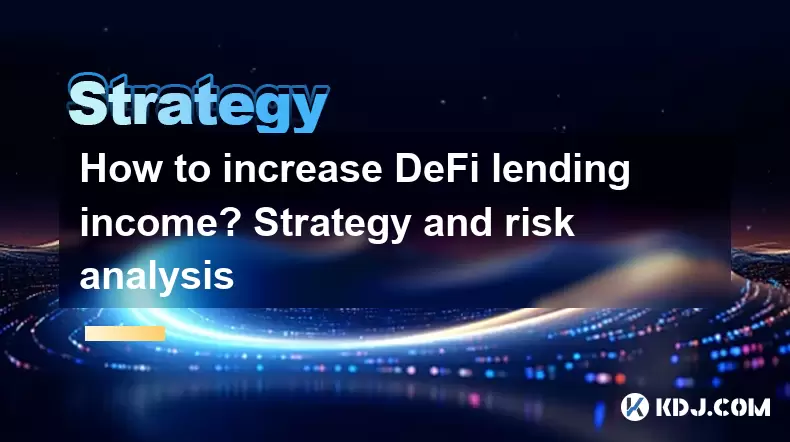
How to increase DeFi lending income? Strategy and risk analysis
Jun 24,2025 at 02:08pm
Understanding DeFi Lending and Its Income PotentialDeFi (Decentralized Finance) lending has emerged as a popular way to earn passive income in the cryptocurrency space. Unlike traditional banking systems, DeFi lending platforms allow users to lend their crypto assets directly to borrowers without intermediaries. The lenders earn interest based on the su...
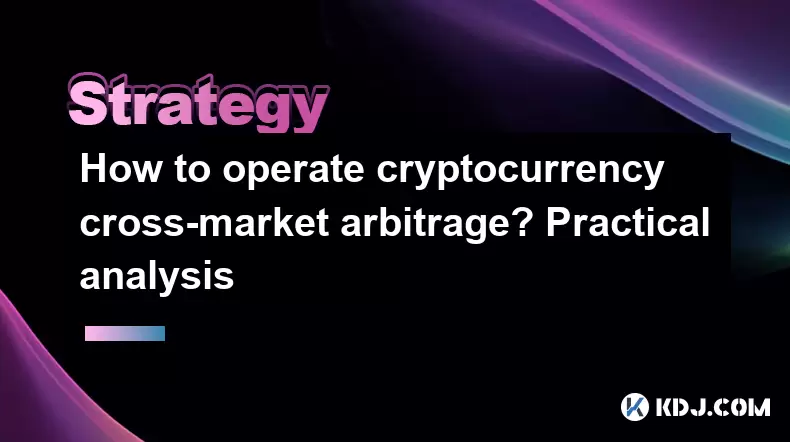
How to operate cryptocurrency cross-market arbitrage? Practical analysis
Jun 23,2025 at 04:01am
Understanding Cryptocurrency Cross-Market ArbitrageCryptocurrency cross-market arbitrage involves taking advantage of price differences for the same digital asset across different exchanges. The core idea is to buy low on one exchange and sell high on another, capturing the profit from the discrepancy. This strategy relies heavily on real-time market da...

How to make profits from high-frequency cryptocurrency trading? Sharing core skills
Jun 19,2025 at 05:07pm
Understanding High-Frequency Cryptocurrency TradingHigh-frequency trading (HFT) in the cryptocurrency market involves executing a large number of trades at extremely fast speeds, often within milliseconds. This method relies on small price discrepancies across exchanges or within a single exchange’s order book. Traders use complex algorithms and ultra-l...
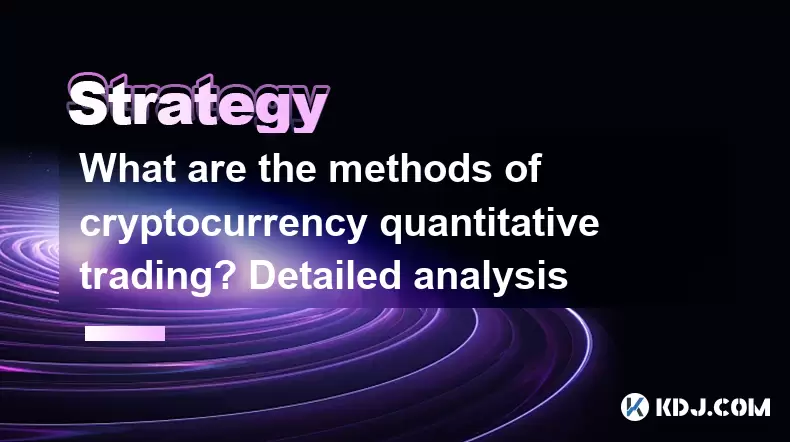
What are the methods of cryptocurrency quantitative trading? Detailed analysis
Jun 22,2025 at 11:07pm
Understanding the Core of Cryptocurrency Quantitative TradingCryptocurrency quantitative trading refers to the use of mathematical models and algorithms to execute trades in the digital asset market. Unlike traditional discretionary trading, which relies heavily on human judgment, quantitative trading leverages data-driven strategies to identify profita...

What are the skills of Bitcoin option hedging? Practical case sharing
Jun 24,2025 at 04:01pm
Understanding Bitcoin Option HedgingBitcoin option hedging is a risk management strategy used by traders and investors to protect their positions in the volatile cryptocurrency market. By using options, individuals can limit potential losses while retaining the opportunity for profit. In essence, it allows one to insulate against adverse price movements...

How to use the price difference between Bitcoin spot and futures? Arbitrage strategy
Jun 20,2025 at 02:56pm
Understanding Bitcoin Spot and Futures MarketsTo effectively leverage arbitrage opportunities between Bitcoin spot and futures markets, it's essential to understand the fundamental differences between these two types of markets. The spot market refers to the direct buying and selling of Bitcoin for immediate delivery at the current market price. In cont...

How to increase DeFi lending income? Strategy and risk analysis
Jun 24,2025 at 02:08pm
Understanding DeFi Lending and Its Income PotentialDeFi (Decentralized Finance) lending has emerged as a popular way to earn passive income in the cryptocurrency space. Unlike traditional banking systems, DeFi lending platforms allow users to lend their crypto assets directly to borrowers without intermediaries. The lenders earn interest based on the su...

How to operate cryptocurrency cross-market arbitrage? Practical analysis
Jun 23,2025 at 04:01am
Understanding Cryptocurrency Cross-Market ArbitrageCryptocurrency cross-market arbitrage involves taking advantage of price differences for the same digital asset across different exchanges. The core idea is to buy low on one exchange and sell high on another, capturing the profit from the discrepancy. This strategy relies heavily on real-time market da...

How to make profits from high-frequency cryptocurrency trading? Sharing core skills
Jun 19,2025 at 05:07pm
Understanding High-Frequency Cryptocurrency TradingHigh-frequency trading (HFT) in the cryptocurrency market involves executing a large number of trades at extremely fast speeds, often within milliseconds. This method relies on small price discrepancies across exchanges or within a single exchange’s order book. Traders use complex algorithms and ultra-l...

What are the methods of cryptocurrency quantitative trading? Detailed analysis
Jun 22,2025 at 11:07pm
Understanding the Core of Cryptocurrency Quantitative TradingCryptocurrency quantitative trading refers to the use of mathematical models and algorithms to execute trades in the digital asset market. Unlike traditional discretionary trading, which relies heavily on human judgment, quantitative trading leverages data-driven strategies to identify profita...
See all articles






















